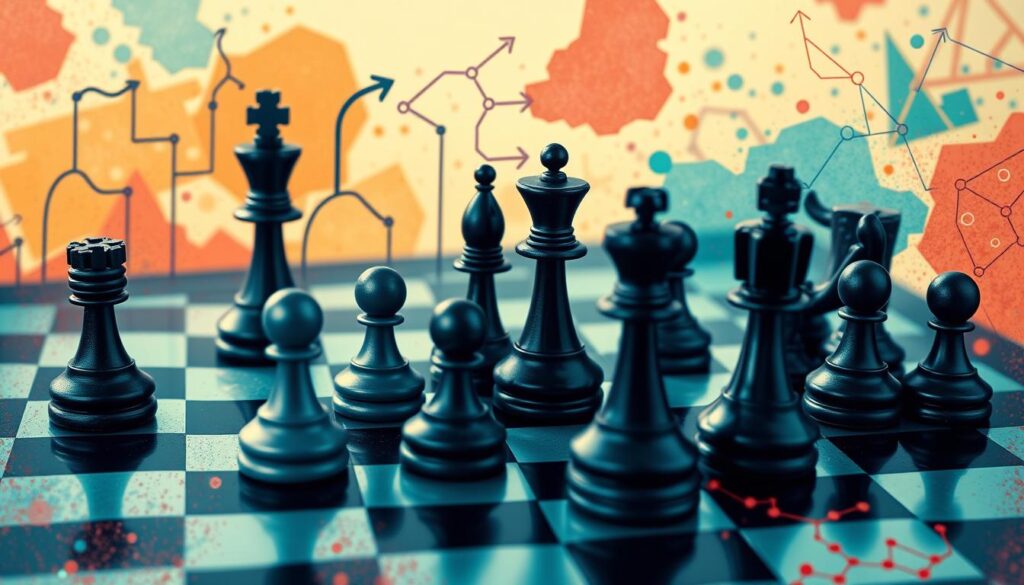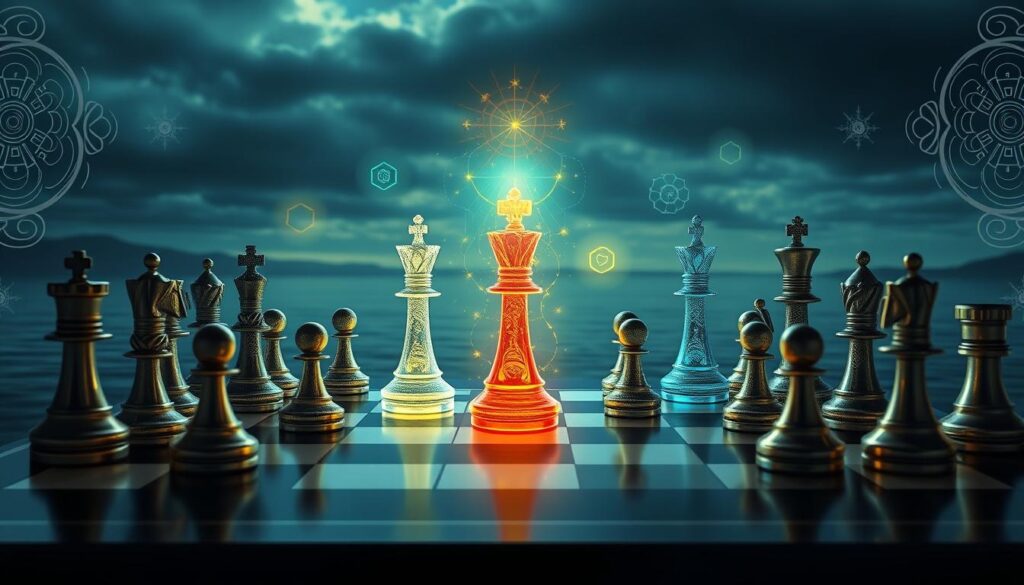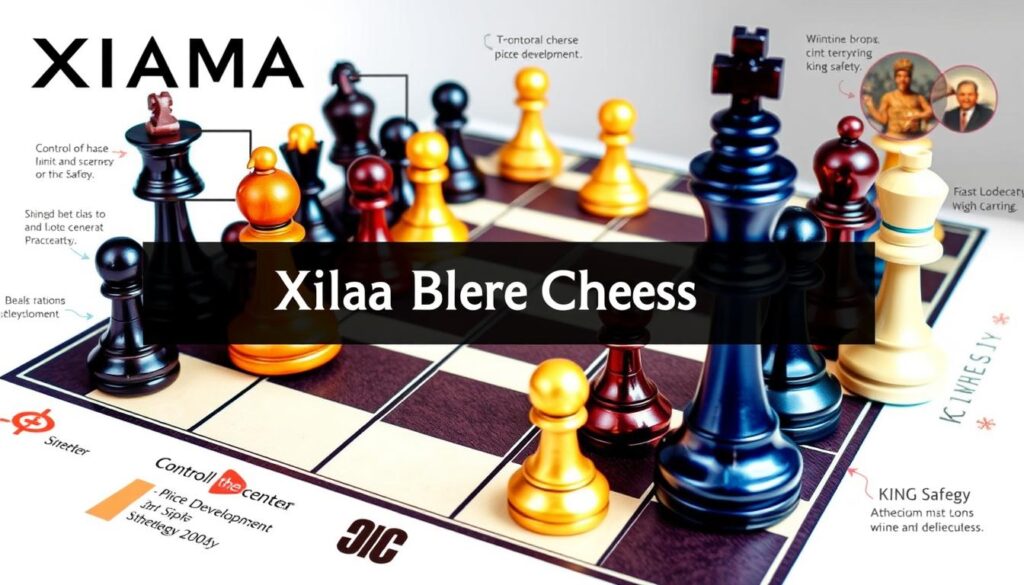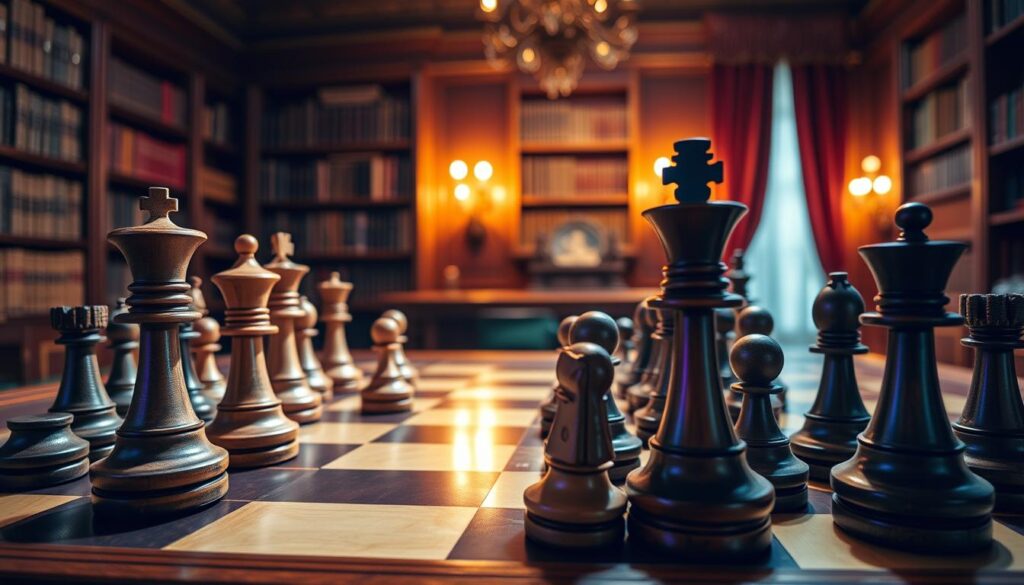Are you tired of feeling stuck at your current chess skill level? What if there was a revolutionary approach that could transform your game from average to exceptional?
The Xiaoma chess method is a groundbreaking strategy for chess players. It goes beyond traditional training. It offers a unique way to master the complex world of chess.
This method combines systematic training with deep strategic insights. It provides a structured way to improve your skills. Whether you’re a beginner or an experienced player, it can help you reach new heights in chess.
Table of Contents
Understanding the Xiaoma Chess Method

The Xiaoma method changes how we learn chess. It uses a new strategy that’s different from old ways. This method helps players see the game in a new light.
It makes complex chess ideas easy to understand. Instead of just memorizing, it teaches players to think and understand the game.
- Develops critical pattern recognition skills
- Simplifies complex strategic concepts
- Focuses on practical application
- Builds intuitive chess understanding
Learning chess with the Xiaoma method is fun. You’ll start to see patterns and strategies that you never noticed before. It makes you think differently and be more creative.
Here are some benefits of the Xiaoma method:
- It helps you learn faster
- It makes you think more strategically
- It improves your ability to recognize patterns
- It makes playing chess more intuitive
Whether you’re new to chess or getting better, the Xiaoma method can change your game. It breaks down hard strategies into easy steps. This lets you reach your full chess potential.
The Strategic Foundation of Chess Success

The Xiaoma chess method is a strong way to improve your strategic thinking. It starts with building a solid base that changes how you see and play chess. Learning chess is about understanding how your pieces work together and how they affect the whole board.
Key strategic principles in the Xiaoma chess method include:
- Piece coordination and synergy
- Intelligent pawn structure management
- Long-term positional planning
- Creating and exploiting strategic advantages
Using the Xiaoma , you see the chessboard as a complex strategic landscape. Your pieces are not alone but work together towards a common goal. It teaches you to think about potential moves, not just the ones you see.
Critical strategic skills you’ll develop through the Xiaoma include:
- Recognizing optimal piece placement
- Anticipating opponent’s potential moves
- Creating multi-layered strategic plans
- Maintaining positional flexibility
Success in chess is more than just memorizing moves. The Xiaoma helps you think deeply about each move. It builds a deep understanding of chess strategy, beyond just basic techniques.
Mastering Opening Principles Through Xiaoma Techniques

The Xiaoma changes how players start games. It moves away from endless moves and focuses on key principles. These principles help unlock strategic thinking right from the start.
With the Xiaoma method, your opening strategy becomes easier to understand. Key principles include:
- Controlling the center of the board
- Developing pieces efficiently
- Protecting your king
- Creating flexible piece positioning
Xiaoma chess is all about understanding, not just memorizing. You learn to see the board in a new way. This lets you adjust your strategy based on your opponent’s moves. It builds your confidence and lessens anxiety in the early game.
Using the Xiaoma method, you turn opening rules into flexible guidelines. This technique helps you:
- Spot pattern opportunities
- Anticipate threats
- Explore different strategic paths
- React creatively to surprises
The Xiaoma method isn’t just about playing chess—it’s about thinking like a strategic master from the very first move.
Developing Your Middlegame Mastery

Mastering the middlegame is crucial in chess, where Xiaoma really stand out. You’ll get better at handling complex situations by learning strategic play and tactical skills.
The Xiaoma method chess approach focuses on several important techniques for middlegame success:
- Pattern recognition training
- Dynamic calculation exercises
- Strategic decision-making frameworks
- Positional evaluation skills
Through targeted practice, your tactical skills will grow. The Xiaoma chess methods help you:
- Spot key squares and piece interactions
- Anticipate your opponent’s moves
- Use strategic imbalances to your advantage
- Choose the best places for your pieces
Visualization and precise calculation become second nature with these systematic training methods. By breaking down complex middlegame scenarios, you’ll improve your chess skills and performance.
Practice is essential. Regular use of Xiaoma chess methods will boost your intuition. This helps you make more confident and accurate decisions during tough game phases.
Advanced Tactics and Combinations
The Xiaoma chess method boosts your tactical skills with new training methods. You’ll learn to spot and use complex combinations. This makes you a strong player on the chessboard.
Learning advanced tactics in Xiaoma means mastering several key skills:
- Pattern recognition
- Calculation precision
- Visualization techniques
- Strategic decision-making
Special drills help you understand complex chess positions. The Xiaoma method breaks down tough tactics into easy-to-follow steps. This makes your strategic thinking stronger.
Important parts of tactical training include:
- Analyzing multi-move combinations
- Identifying hidden tactical opportunities
- Practicing rapid calculation sequences
- Developing intuitive board sensing
Through mental exercises and real games, Xiaoma turns tough tactics into easy moves. Your chess smarts will grow. You’ll start to see and make winning moves with ease.
Master the art of tactical excellence through dedicated, structured training.
Endgame Excellence with the Xiaoma Method
Mastering the endgame is key in chess. The Xiaoma method offers new strategies to improve your final moves. Knowing how to handle complex endgames can win you the game.
The Xiaoma method focuses on important endgame rules. These rules help you think strategically:
- Maximizing king activity in simplified positions
- Understanding critical pawn structures
- Coordinating remaining pieces effectively
- Converting small advantages into decisive wins
Practical endgame techniques are central to the Xiaoma method. You’ll learn to see the board in a new way. This lets you spot chances to win even when the game seems tied.
Through Xiaoma method training, you’ll gain:
- Precise calculation of material advantages
- Strategic piece placement
- Intuitive understanding of pawn dynamics
- Psychological resilience in critical moments
By studying endgames with the Xiaoma method, you’ll grow from a tactical player to a strategic chess master. You’ll be able to handle complex final positions with confidence.
Mental Training and Psychological Preparation
Chess is more than just knowing how to move pieces. The Xiaoma shows that getting your mind ready is key. Your mental state can change how well you play, making wins or losses unpredictable.
Important mental strategies in the Xiaoma include:
- Developing laser-sharp concentration techniques
- Managing emotional responses during intense matches
- Building mental resilience under competitive pressure
- Creating pre-game mental preparation routines
The Xiaoma teaches you to train your mind as hard as you train your chess skills. Top players know that getting your mind ready is a big advantage. By using Xiaoma , you’ll learn to control your mind, lower stress, and stay focused in tough games.
Visualization and mindfulness are big parts of the Xiaoma chess method. These help you stay calm, think clearly, and make smart moves without getting emotional. You’ll get mental tools that turn stress into strong performance.
Chess is as much a mental game as it is a strategic one. The Xiaoma gives you mental skills that make you stand out from the rest.
Practical Application in Tournament Play
Learning the Xiaoma is more than just knowing the rules. It’s about using your skills in real games. The Xiaoma method helps you make smart moves in tense situations.
Getting ready for tournaments involves a few key steps:
- Mental preparation and psychological readiness
- Time management strategies
- Adaptability across different game formats
- Strategic decision-making under pressure
Using the Xiaoma method in tournaments means you’ll get better at:
- Quickly figuring out your opponent’s plans
- Making fast but smart moves
- Keeping your cool
- Using time wisely
Each tournament type needs its own strategy. Blitz games require quick thinking, while longer games let you think more deeply. The Xiaoma method teaches you how to adapt to any game.
Your success in tournaments comes from using the Xiaoma method’s main ideas. These are: knowing your strategy, staying mentally strong, and thinking tactically. Keep practicing these skills to improve your game.
Training Regimens and Study Plans
Mastering the Xiaoma chess methods starts with a strategic training plan. You need a study plan that focuses on your strengths and weaknesses. This plan is the first step to becoming a chess champion.
The Xiaoma method chess approach suggests a training plan that covers all chess skills:
- Daily tactical puzzles
- Strategic gameplay analysis
- Opening theory study
- Endgame technique practice
Make a weekly schedule for different chess skills. Consistency is key in the Xiaom. Try to practice 1-2 hours every day, focusing on one skill at a time.
Important parts of a good training plan are:
- Analyzing your recent game performances
- Identifying specific skill gaps
- Utilizing targeted resources
- Tracking your progress systematically
Use online platforms and chess databases to enhance your training. Digital tools offer interactive learning and help track your progress.
Technology Integration and Online Resources
The digital age has changed chess training a lot. The Xiaoma uses the latest tech to improve your learning. Now, you can use artificial intelligence and online tools to get better at chess.
Key tools for the Xiaoma include:
- Advanced chess analysis software
- Interactive online training platforms
- AI-powered chess engines
- Virtual coaching solutions
Modern chess training uses AI to analyze thousands of games. These tools give you instant feedback and deep insights. They help you grasp complex strategies in the Xiaoma .
Online resources have changed how we learn chess. Now, you can find:
- Real-time game analysis
- Personalized training modules
- Global player matchmaking
- Interactive strategy workshops
The Xiaoma chess method works well with these digital tools. It combines old chess wisdom with new tech. This way, you can learn faster and understand chess strategies better.
Embrace the power of technology to unlock your full chess potential with the Xiaoma chess method.
Conclusion: Embracing the Xiaoma Chess Method for Long-term Success
Your chess journey hits a turning point with the Xiaoma method. It lets you unlock new potential in your game. This method gives you a deep understanding of chess strategy and personal growth.
Mastering the Xiaoma method takes dedication and regular practice. Each technique is a step towards chess greatness. Your skill in using these strategies will make your game stand out.
Keep learning as you grow in chess. The Xiaoma method guides you to keep getting better. It challenges you to explore new chess insights. Your hard work will boost your chess skills and improve your thinking.
See the Xiaoma method as a way of life, not just a training tool. Your chess path is special, and these principles will help you succeed. You’ll build a strong base for lasting success, strategic thinking, and personal growth.
FAQ
What is the Xiaoma Chess Method?
The Xiaoma Chess Method is a detailed way to learn chess. It focuses on learning step by step, recognizing patterns, and thinking strategically. It helps all players get better by teaching core principles, not just memorizing moves.
How is the Xiaoma Chess Method different from traditional chess training?
The Xiaoma Chess Method is different because it doesn’t just teach memorization. It teaches the basics of chess, strategic thinking, and understanding the game deeply. It uses new ways to learn, like recognizing patterns and improving skills step by step.
Can beginners benefit from the Xiaoma Chess Method?
Yes! The Xiaoma Chess Method is for everyone, from beginners to experts. It gives a solid base for learning chess. It helps new players think strategically and improve their skills right from the start.
How does the Xiaoma Method approach chess openings?
The method teaches the basics of openings, not just memorizing moves. It helps players learn a flexible opening strategy. It focuses on developing pieces and understanding the board.
What makes the tactical training in the Xiaoma Method unique?
The Xiaoma Method’s tactical training is special because it uses unique exercises. These exercises improve tactical skills by recognizing patterns and solving problems. It helps players see complex situations and make smart moves.
How can I integrate the Xiaoma Chess Method into my current training?
To use the Xiaoma Chess Method, follow its main ideas. Create a training plan that covers tactics, strategy, openings, and endgames. It’s flexible and can fit your skill level and goals.
Does the Xiaoma Method include mental training?
Yes, it focuses a lot on mental training. It teaches how to improve focus, control emotions, and stay strong during games. It knows that mental skills are key to winning at chess.
Can technology be used with the Xiaoma Chess Method?
Yes, the method uses technology. It recommends chess software and online tools that match its training. These tools help with recognizing patterns, analyzing games, and improving skills.
Is the Xiaoma Chess Method suitable for competitive players?
Definitely. It’s great for competitive players. It offers advanced strategies for tournaments, adapting to different situations, and improving performance.
How long does it take to see improvement using the Xiaoma Method?
Improvement time varies, but most see progress in 3-6 months. The method’s structured approach ensures ongoing learning and skill growth.

















